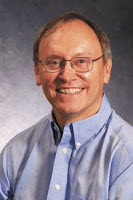COMMENT ONE: KHSU FIRES
KATIE WHITESIDE & LISTENERS PROTEST
 |
Katie Whiteside
(photo courtesy of
Kevin Hoover, Mad River Union) |
Our
story last Tuesday about KHSU’s new GM and the subsequent firing of PD/Ops
Manager Katie Whiteside generated lots of traffic.
Our post went viral and, as
of this writing, has had over 2,000 page views – a big day for this little blog.
Most
readers felt KHSU’s licensee, Humboldt State University, did a poor job of
vetting the person they chose to be GM.
Fred
Fletcher-Fierro, Morning Edition Host
& Producer at KRPS in Pittsburg, Kansas, pointed out that perhaps Whiteside
was a rival for the GM job:
 |
| Fred Fletcher-Fierro |
Fletcher-Fierro: Nice article about the unfortunate situation up on the
beautiful northern California coast. I used to live in both Arcata and Eureka. It
can be incredibly difficult to adjust to living up there. You really have to
embrace the local traditions and cultures to meet people there.
[The story] reads like a
public radio outsider clashing with long time establish employees. Without
knowing anything about the situation other than reading your article I would
have to say that Katie perhaps wanted the GM job but Humboldt State hired
somebody else.
Anyway... Katie's profile
is still up on the KHSU website [link].
COMMENT TWO: DIFFERENT
PERSPECTIVES ON PEW’S REPORT ABOUT PUBLIC RADIO & TV
 |
| Tom Taylor |
Our
friend and fellow blogger/journalist Tom Taylor [link] found greater value in Pew
Research Center’s report about the state of public radio and TV news than we
did. Taylor thinks the report provides a useful overview of three public radio
networks – NPR, APM and PRI. We criticized the report for omitting PRX and felt
it added no new perspective for people who work in public radio.
Taylor
knows his audience – the movers and shakers of commercial radio (and their
bankers) – and tailor’s [bad pun] his content for them. Our readers include
some of the movers and shakers of public radio and found little of value in the
Pew report for them.
Read
the report and decide for yourself. Download
it here.
COMMENT THREE: FOR THE
LOVE OF GARLIC FRIES
 |
| Lindsay Wood Davis |
Our
story last week about internal conflicts at Mendocino County’s KZYX [link] that
led to fights and food-flinging at a meeting of the station’s Community
Advisory Board brought this comment from Lindsay Wood Davis, manager and co-founder of
WVMO-LP in Madison, Wisconsin:
Davis: I'll bet that is the
first time that the term, "garlic fries" has ever made it into a
broadcasting newsletter! Great report, Ken! Hilarious and awful at the same
time.
KEN SAYS: Davis is probably correct.
We haven’t seen “garlic fries” cited in a media news report either. We think
the biggest takeaway from the KZYX story is Don’t
hold Board meetings in a bar.
BTW
– Check out WVMO online [link]. It is one of the most innovative LPFM stations
in the nation.
COMMENT FOUR: LEARN TO LOVE MORMON RADIO
In
late April [link] we reported that Brigham Young University (BYU) decided not
to scrap Classical music on KBYU because of protests by Classical fans. KBYU is
keeping Classical and BYU purchased another Salt Lake City station for Mormon
Oriented Radio (“MOR”).
BYU
previously had announced they would change KBYU’s format to a format featuring locally
produced Mormon music and talk programming. We listened to samples of BYU’s “MOR”
shows and said such narrow-niche programming will not draw enough listeners to
be sustainable.
Spark
News reader Don McCullen has a different take on the potential popularity of
Mormon programming:
McCullen: Let me tell you right now Ken, that LDS’s Talk format (a/k/a
“Up With Mormon” radio), will work in Salt Lake City, just as Hawaiian musical
styles work in Honolulu. These are formats that truly are regional, and can
only work in certain communities.
Mormon Talk may not be in
the top five but it will have a significant draw. Salt Lake City’s KSFI-FM
[link] also plays a mix of LDS music such as hymns and choral anthems all
Sunday long. It is a Sunday institution. https://fm100.com/
 |
| Michael Dunn |
KEN SAYS: We trust McCullen’s word
about the appeal of Mormon programming in Salt Lake City. Mormon music?
We’ve always thought it was any tune released by members of the Osmond
family.
Over
the years I have done consulting work for religious organizations involved in
national program syndication. They often have a different interpretation of “success.”
Rather than using the typical metrics such as ratings, revenue and
sustainability to evaluate their work, they grade it on an eternal, Godly
scale.
This
is probably what BYU’s programming guru, Michael Dunn, meant when talked the value
of BYU’s “Up With Mormon” format:
“One of the few pressures we don’t have is monetization pressure. Our
clarion call is to do better work.”
In
other words, it doesn’t matter if anyone else listens to BYU’s programs. They
are successful if Dunn likes them and considers them "better work."


P.S. You might remember those "I'm not a Moonie" signs with the people that used to sell flowers on the street. For the record, I am not a Mormon...just a person who was trained in radio and loves the business and is looking for his niche.
ReplyDelete